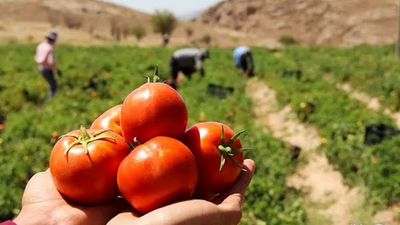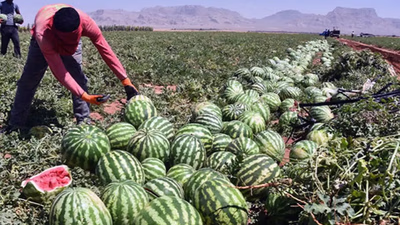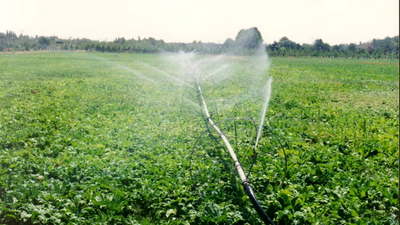
Agricultural trade in Asia: crops, livestock, and vegetables.
In the developed countries of Asia, the agricultural sector is of special importance in such a way that they are currently turning to the production of more organic and healthy products. According to the mentioned issues, agriculture is one of the most important production sectors of Asian countries, and by providing appropriate facilities for this sector and investing in the labor force, we can expect a stable economy for the economic growth of countries, which is one of the most important factors. It is considered development.
Agriculture is a major source of employment in Asian countries, particularly in rural areas. It provides livelihood opportunities for a significant portion of the population, especially small-scale farmers and agricultural laborers. The sector absorbs surplus labor and contributes to reducing unemployment and poverty rates. Asian countries are home to large populations, and agriculture plays a crucial role in ensuring food security. The sector produces staple crops such as rice, wheat, maize, and other essential food items. By promoting agricultural productivity and self-sufficiency, countries can reduce their dependence on food imports and stabilize domestic food prices. Agriculture is closely linked to rural development in Asian countries. It drives economic activities in rural areas, creating opportunities for income generation and improving living conditions. It supports the development of rural infrastructure, including irrigation systems, transportation networks, and storage facilities.
Agricultural industry is the most important economic sector of Asian countries. Because the task of producing and preparing food raw materials is the responsibility of this sector and industry. Considering that this sector includes a large part of those who are directly or indirectly involved in the various stages of production and supply of agricultural products, it can be said that the development of agriculture and its related industries can increase the gross domestic product. Job creation, foreign exchange and also self-sufficiency of countries in importing agricultural products.
The agricultural sector in developing Asian countries is the main engine of economic growth and development. In order to overcome the crises of lack of development, developing countries should go to their agricultural sector and while trying to expand agricultural production, they should think of mixing this sector with advanced technologies in order to make their production more efficient.
The agricultural sector, due to its extensive connections with other economic sectors, can provide the basis for wealth production, market creation and currency creation and industry growth with its growth. Therefore, in order to get out of economic crises, developing countries should consider the agricultural sector as one of the main pillars of economic development, and because of the significant role that this sector plays in providing food, society's welfare, Gross National Product (GNP) and ultimately economic growth. National plays, put it at the top of their economic plans.
The amount of agricultural trade in the world in 2014 was one thousand and 765 billion dollars, and as in previous years, Europe accounted for 42%, followed by Asia for 22% and Middle East countries for only 2%. Wheat, rice, barley and corn are the most important agricultural commodities in West Asia. Governments in Asian countries recognize the significance of agriculture and have implemented policies and programs to support the sector. These include investment in rural infrastructure, agricultural subsidies, credit facilities, market linkages, and agricultural extension services. Policy interventions aim to enhance productivity, promote sustainable practices, and improve the livelihoods of farmers.
Agriculture contributes significantly to export earnings for many Asian countries. Cash crops, such as tea, coffee, spices, rubber, palm oil, and tropical fruits, are major exports. Asian countries with favorable agro-climatic conditions have a comparative advantage in producing and exporting these commodities, generating foreign exchange and contributing to national income. Agriculture serves as a crucial input for various industries in Asian economies. Agro-processing industries rely on agricultural raw materials to produce value-added products such as processed foods, textiles, paper, and biofuels. The agricultural sector's growth stimulates industrial development, job creation, and economic diversification.
Many Asian countries possess scenic rural landscapes, cultural heritage, and traditional agrarian practices. Agricultural tourism and rural tourism have gained popularity, attracting domestic and international visitors. This diversifies the economy, creates employment opportunities in the tourism sector, and promotes cultural heritage preservation. Agriculture plays a vital role in poverty alleviation efforts in Asian countries. By increasing agricultural productivity, improving access to markets, and providing support to small-scale farmers, governments aim to reduce rural poverty. Initiatives such as microfinance, agricultural extension services, and rural development programs contribute to poverty reduction.
Agriculture in Asia faces the challenges of climate change, water scarcity, and environmental degradation. The sector's sustainable development is essential for ensuring long-term productivity and resilience. Asian countries are increasingly adopting climate-smart agriculture practices, water management techniques, and sustainable farming methods to mitigate environmental impacts and enhance resilience. Asian countries are embracing agricultural technology and innovation to boost productivity and efficiency. Investment in research and development, adoption of precision farming techniques, use of improved seeds, and mechanization are transforming the agriculture sector. These advancements contribute to increased yields, reduced post-harvest losses, and improved resource management.



